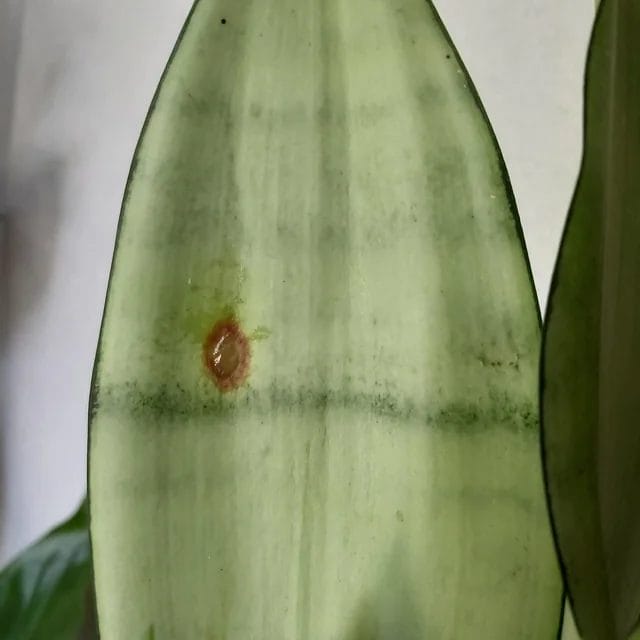
Snake plants, also known as Sansevieria, are popular indoor plants due to their unique appearance and low maintenance requirements. However, like any other plant, snake plants are susceptible to various diseases, including fungal infections. If you notice signs of fungus on your snake plant, addressing the issue promptly is crucial to prevent further damage. In this blog post, we will discuss the common types of fungus that affect snake plants and provide you with effective treatment strategies to restore your plant’s health.
Identifying Fungal Infections in Snake Plants
Before diving into treatment methods, it’s essential to understand how to identify fungal infections in snake plants. Here are some common signs of fungal issues:
Yellowing or browning leaves: Fungal infections can cause discoloration and wilting of leaves.
Spots or patches: Look for small spots or patches on the leaves that may have a fuzzy or powdery appearance.
Soft or mushy leaves: Fungal infections can cause the affected leaves to become soft or mushy.
Stunted growth: If your snake plant isn’t growing as expected, it may be due to a fungal infection.
Types of Fungus Affecting Snake Plants
Different types of fungi can affect snake plants, each with unique characteristics and treatment requirements. Here are some common fungal infections that snake plants may encounter:
a. Root Rot (Rhizoctonia and Pythium)
Root rot is a common fungal disease caused by Rhizoctonia and Pythium fungi. This infection occurs when the roots of the snake plant are consistently exposed to excessive moisture.
Symptoms of root rot include:
A foul odor coming from the soil
The darkening and mushy texture of the roots
Wilting and yellowing of leaves
To treat root rot, follow these steps:
Carefully remove the plant from its pot and inspect the roots.
Trim away any affected roots using sterilized shears.
Allow the remaining healthy roots to dry out before replanting in fresh, well-draining soil.
Adjust your watering schedule to prevent overwatering in the future.
b. Leaf Spot (Cercospora)
Leaf spot is another common fungal infection that affects snake plants. Cercospora fungus causes small, dark spots to appear on the leaves, eventually expanding and merging into larger patches.
To treat leaf spot:
Prune and remove any infected leaves immediately.
Ensure good airflow around the plant by avoiding overcrowding.
Use a fungicide specifically designed for leaf spot on houseplants, following the label instructions carefully.
c. Powdery Mildew (Erysiphe cichoracearum)
Powdery mildew is a fungal infection characterized by a white, powdery coating on the leaves of snake plants. This fungus thrives in high humidity conditions and can spread rapidly if left untreated. To combat powdery mildew:
Increase air circulation around the plant by using a fan or opening windows.
Wipe affected leaves with a damp cloth to remove the mildew.
Apply a fungicide labeled for powdery mildew according to the instructions.
Preventing Fungal Infections in Snake Plants
Prevention is always better than cure for fungal infections in snake plants. Here are some preventative measures you can take:
Optimal watering: Avoid overwatering your snake plant and ensure proper drainage to prevent root rot.
Well-draining soil: Use a well-draining potting mix specifically formulated for succulents or cacti.
Proper ventilation: Ensure good airflow around your snake plant by placing it near an open window or using a fan.
Quarantine new plants: Before introducing a new plant into your collection, isolate it for a few weeks to prevent potential disease transmission.
Regular inspection: Regularly inspect your snake plant for any signs of fungus or other diseases, catching issues early on.
Natural Remedies for Snake Plant Fungus
If you prefer natural remedies or want to try something before resorting to chemical treatments, here are a few options:
Neem oil: Dilute neem oil with water and spray it on affected areas to control fungal growth.
Baking soda solution: Mix one teaspoon of baking soda with one quart of water and apply it to the affected leaves using a spray bottle.
Cinnamon powder: Sprinkle cinnamon powder on the soil surface to prevent fungal growth.
Remember to test any natural remedies on a small area of the plant first to ensure it doesn’t cause any adverse reactions.
Conclusion
Fungal infections can pose a threat to the health and vitality of your snake plant. By identifying the signs of fungus early on and implementing appropriate treatment strategies, you can save your beloved houseplant from further damage. Remember to maintain proper care practices, such as optimal watering and adequate ventilation, to prevent future fungal infections. With a little attention and proactive care, your snake plant can thrive and continue bringing beauty to your indoor space for years.
